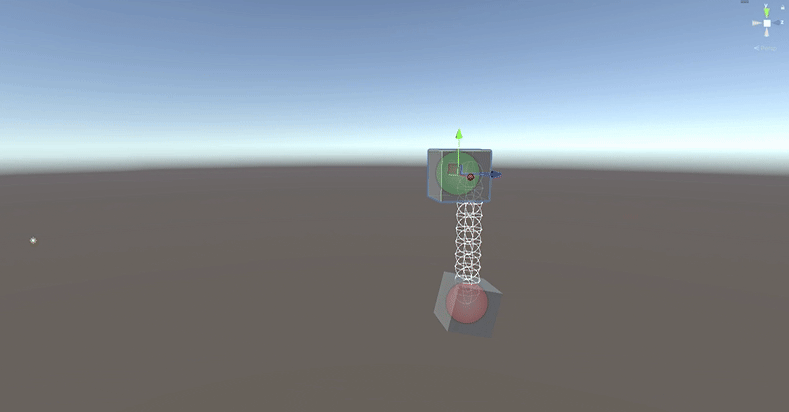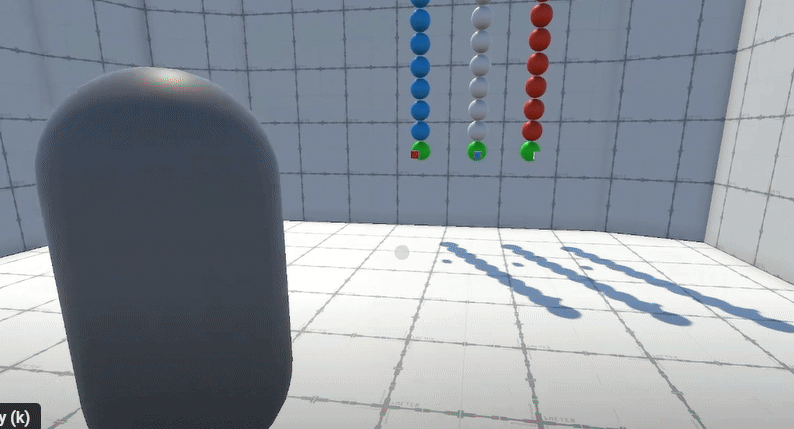Overview
Placebo Entertainment LLC was formed by a group of Bradley University students to work on a project through the full production cycle and publish it on Steam.
My official role on the project was Lead Gameplay Engineer. As such, I developed an efficient development workflow for the Engineering Team. I created and enforced code standards and setup a peer code-review system, improving team collaboration and efficiency taking work through the development cycle.
Using Google Sheets, I built and maintained a detailed engineering roadmap aligned with the project's production timeline to ensure we hit deadlines and achieved our goals. Near the end of the development cycle, I triaged bugs and tasks across all disciplines as we finished completed our last stretch.
My contributions to the game itself included significant participation in testing and code reviews, building interactive minigames, clearing tech-debt, and optimizing systems as our project scaled.
Minigames
Beyond the Marion consists of several minigames the player must complete in order to reach the end of the game. I developed one minigame from scratch, and refactored two others as part of my initiative to clear tech-debt and optimize our game systems.
Wire Minigame
The wire minigame involves the player interacting with a node at the end of the wire in order to attach it to the corresponding receptor. The entire minigame consists of four main scripts:
(1) The wire motion, controlling the physics and movement of the wire.
(2) The wire logic, controlling wire-player interaction and high level gameplay logic for each individual wire.
(3) The wire receptors, handling the portion of the minigame when a player connects a wire to the receptor.
(4) The wire minigame state machine, tracking and communicating the player's progress of the wire minigame to other game systems.
(1) The wire motion, controlling the physics and movement of the wire.
(2) The wire logic, controlling wire-player interaction and high level gameplay logic for each individual wire.
(3) The wire receptors, handling the portion of the minigame when a player connects a wire to the receptor.
(4) The wire minigame state machine, tracking and communicating the player's progress of the wire minigame to other game systems.
Early Wire Iterations
In order to make the wires to look and feel like wires, I learned how to use joints in Unity. Each wire consists of several segments attached with free and limited configurable joints to control the direction and amount each joint is able to rotate.
The wire tool allows a user to specify the amount and size of each segment for the segments to generate during runtime.

Early iteration exploring how the wire behaves with static objects on each end.

Early iteration exploring how the joints interact.

Wire minigame playthrough in the alpha build.
Fire Minigame
The Fire Minigame involves the player spraying water on bouts of flames. When the player runs out of water, the flames begin to grow until they reach a maximum size. The minigame progresses is completed once all fires have been extinguished.
I refactored the fire minigame and UI functionality to ensure it met our teams code standards and optimized it.
The original code for this minigame ran constantly as the minigame was active. I reorganized the functions so only necessary portions would run at time, separated large chunks of code into functions, and removed boilerplate code. I learned how to implement Unity Particle collisions in C# to improve the minigame feel as the water and fire particle systems collided.
Overall, this process improved the codes readability, ensured the necessary data was exposed to designers to modify, and increases responsiveness within the fire and water interactions.
I refactored the fire minigame and UI functionality to ensure it met our teams code standards and optimized it.
The original code for this minigame ran constantly as the minigame was active. I reorganized the functions so only necessary portions would run at time, separated large chunks of code into functions, and removed boilerplate code. I learned how to implement Unity Particle collisions in C# to improve the minigame feel as the water and fire particle systems collided.
Overall, this process improved the codes readability, ensured the necessary data was exposed to designers to modify, and increases responsiveness within the fire and water interactions.
Ripcord Minigame
The Ripcord Minigame involves the player moving the ripcord handle backwards until it reaches an invisible range. Once in the range, the flashing lights above the ripcord freeze, indicating for the player to let go. This repeats until all 3 lights have stopped flashing,
I refactored this minigame, ensuring it met our teams standards and improved code readability. Each function and file contains only the necessary information, decoupling it from other systems and adhering to the single responsibility principle. This improved maintainability and debugging, allowing others to easily use and test the minigame.
Team Photo!
Placebo Entertainment LLC 2024